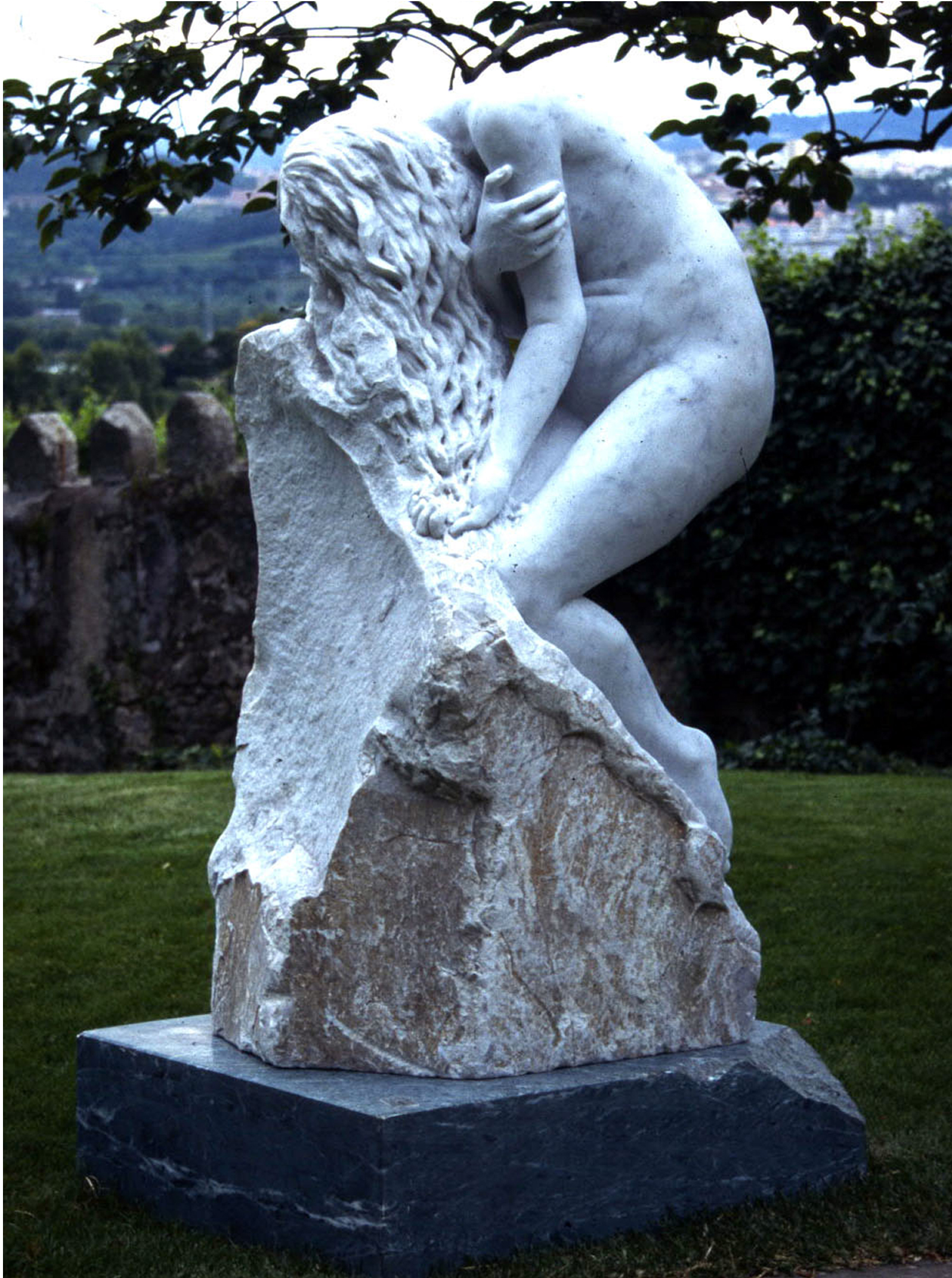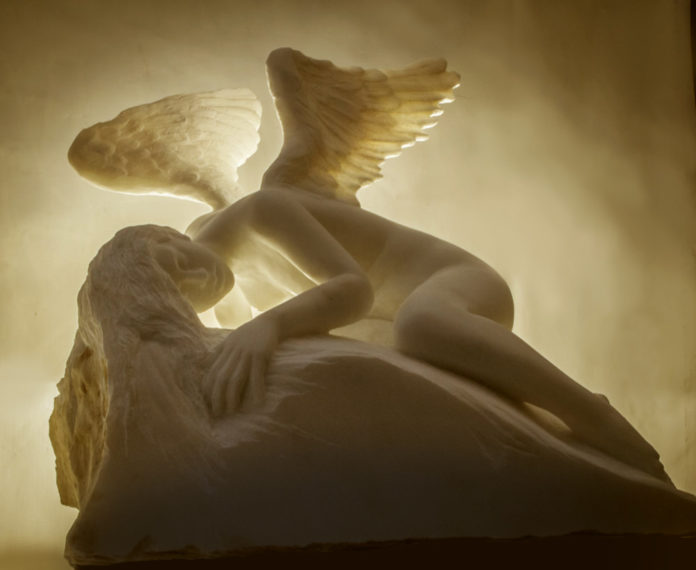Art inspiration > John Fisher shares an essay on the importance of interdisciplinary study in figurative art.
Drawing and painting inform my decisions while sculpting stone.
By John Fisher
Drawing is where we learn our profile lines. While drawing, we learn that all lines are in relationship to every other line. There is a right and left side to all forms. When I am evaluating a profile, I am also looking at its opposite profile. When sculpting, I am making changes to only one line at a time. Moving slightly exposes new lines to evaluate. Line by line, decisions are made and the volumes take form.
As the sun plays on the surface of the sculpture, the shapes of the shadows reveal the form of the volumes. As a painter, I expect to see certain shapes of shadows in certain locations. When I don’t see them, I know the form is wrong. The sun never lies; it points out our mistakes. All profiles if seen from 180 degrees are backwards but otherwise identical. So if I am seeing a mistaken line, I can check it by moving to the opposite side and it should also be wrong. Profile carving leaves no doubt about where to remove the material and how much to take off. If you know how to draw the figure from all points of view, then you can sculpt it.
The process of profile carving, I believe, was done for centuries when eye protection did not exist. It was a safe, easy, and accurate technique. It was passed on to each new carver, who quickly learned to follow its simple rule.

Never look at the front of the chisel. If you can see the leading edge of the chisel you will be blind by the end of the day. The material in front of the chisel is what you are trying to remove. It is your waste material. It is backed up by more material, so when finally it lets go, it ricochets right back at you.
Always look behind and underneath the chisel. The easiest way to do that and to remove the most material with each blow is to carve the extreme far edge or profile of the block. The profile is a line, which can easily be determined to be either correct or incorrect. A new line is drawn if changes need to be made. The chisel is put right on the new line and struck. Because it is on the far edge, you are looking behind the chisel and the material being removed wants to break, as there is only air behind it. The stone will break exactly on the line and the damage to the remaining stone is minimal, because it is tangent to the form instead of penetrating it.
Related Article > How I Create Narrative Paintings With Athletes and Dancers as Models
I believe that if students were to draw a hand, paint it, and sculpt it in a single session, the knowledge of the hand would be much deeper. I recommend this interdisciplinary approach to figurative art. There is a freedom that comes with practice and observation, and then more practice.
My own journey began with drawing and moved to painting to earn a living. Drawing is the key to painting as well. Layout and composition are essential elements in artistic endeavors. The pencil teaches us a love of line and value. The brush teaches us the love of shape.
With sculpture, to work with a full palette, we need volumes that catch the light and cast shadows, including dark recesses, which are black.
My transition to sculpture was very smooth. Years of drawing and painting had taught me so much, but I knew something was wrong when flying chips of stone cut and hurt me. Looking for a way to send chips away led me to profile carving. I have not found any reference to it except a few old drawings or paintings of artisans working. My own experience, though, has convinced me that it is the fastest, most accurate, and safest technique for carving stone. I am interested in a creative experience drawn on intuition and knowledge that yields a result which gives meaning to my days.
Learn more about John Fisher at www.facebook.com/JohnFishersStudio and visit his website at www.johnfishersculpture.com.
In what ways do you practice interdisciplinary study for art? Share it with us in the comments below.






What an amazing article. Thanks for introducing your readership to John Fisher and his remarkable approach to representational sculpture. I also enjoyed his teaching video. And how his safety tips. Wonderful!
Comments are closed.